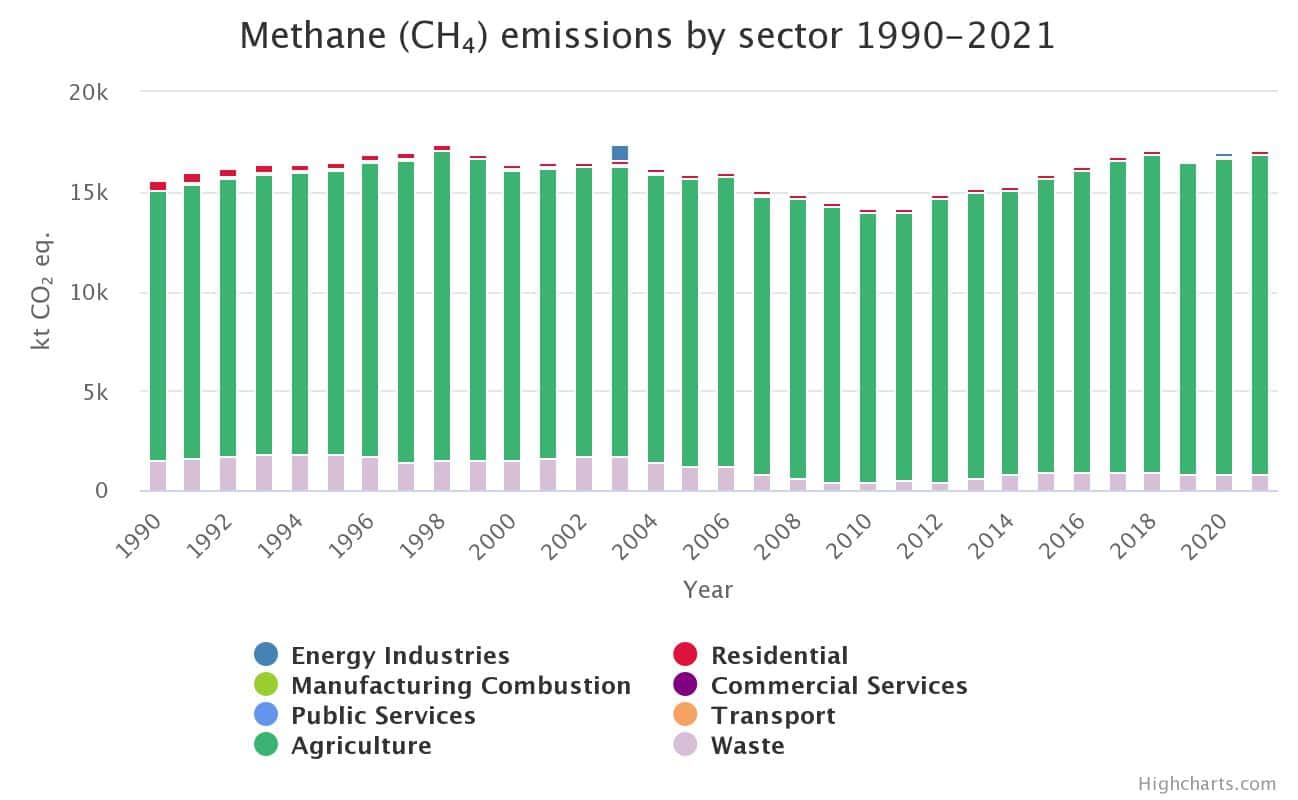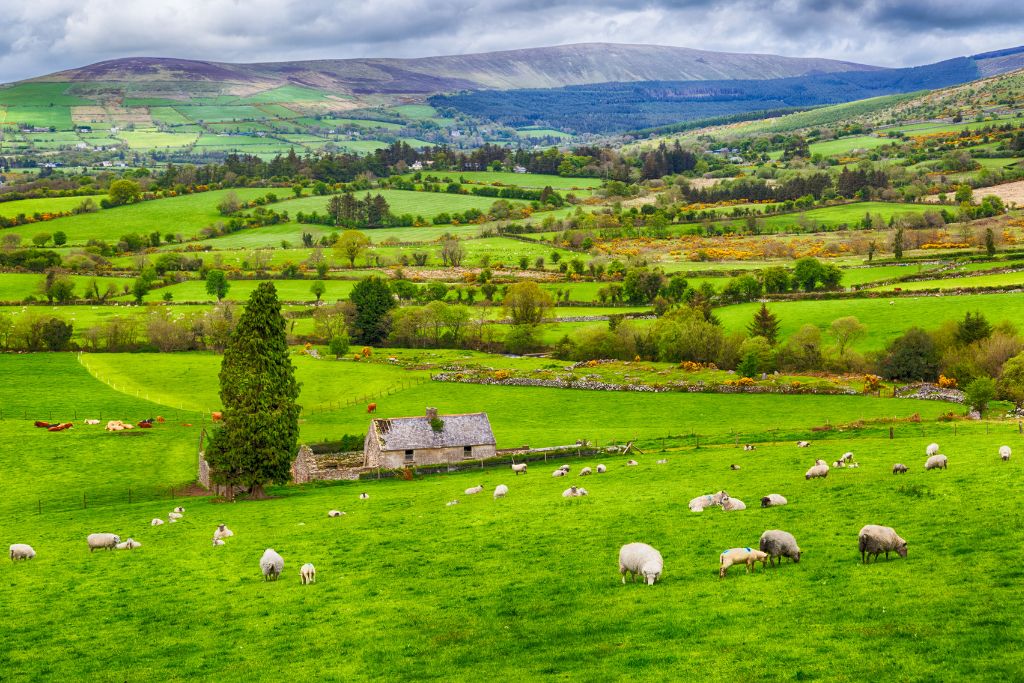Following weeks of discussion, Ireland’s coalition government passed a deal last week under which farmers will be asked to cut emissions from agriculture by 25% by the end of the decade, compared to 2018 levels.
—
A highly contested deal on emission reductions for the agriculture sector has been agreed upon by government leaders last week. Under the new Sectoral Emissions Ceilings, Irish farmers will need to cut emissions by 25% compared to 2018 levels by 2030.
According to the Environmental Protection Agency (EPA), methane is the second largest contributor to greenhouse gas emissions in Ireland, mainly due to the country’s extremely large cattle population.

Image 1: Methane emissions by sector in Ireland, 1990-2021
Fierce debates went on for weeks before the deal was finally adopted. Agriculture Minister Charlie McConalogue had reportedly refused to go above 24%, while Environment Minister and Green Party leader Eamon Ryan was not ready to compromise for anything below 26%.
According to a statement issued by the Green Party – which called the deal “a significant step in the right direction”, the government “will take immediate measures […] to further support farmers to implement more sustainable business models”. McConalogue also praised the agreement, describing it as a “very challenging but ultimately achievable ambition for the sector.”
Despite being acclaimed by some, environmentalists, opposition legislators, and Irish farmers contested the new agreement. While some argue that anything below a 30% cut would not be enough for the country to reach its climate goals, the Irish Farmers’ Association also voiced anger. President Tim Cullinan described the deal as a “potentially devastating blow for Irish farming and the rural economy” that could cost farmers up to €2 billion a year.
Last November, Ireland approved the Climate Action Plan 2021, a roadmap to cut emissions by 51% by 2030 and reach net zero by no later than 2050. The new deal builds on this plan and introduces new policies to keep the country within its carbon budget.
Emission reduction targets have been set for all sectors of the economy. Besides a 25% reduction of emissions from agriculture, the deal orders a 75% cut from electricity, a 50% from transport, as well as a 45% and a 40% emissions reduction for commercial and residential buildings respectively.
Aside from emission ceilings for all sectors, the government plans to boost the generation of renewable energy, particularly solar, biomass, and offshore wind power.
You might also like: 3 Ways to Effectively Reduce Methane Emissions From Cows


















